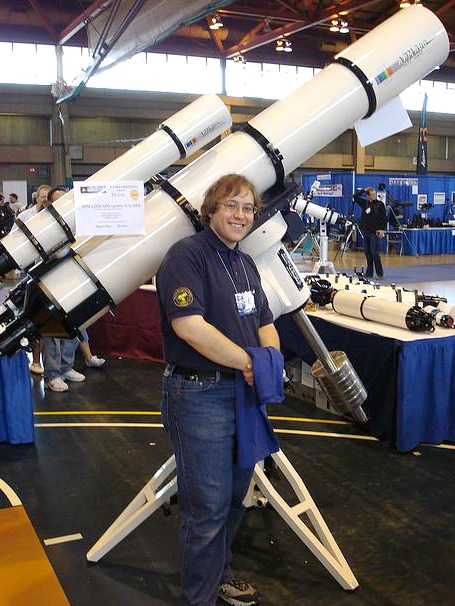Science Under the Dome: Transit of Venus
In the days before space probes, each tiny scrap of data about the solar system was acquired with a lifetime of hard work: from Copernicus turning the universe inside-out, to Galileo charting the orbits of Jupiter's moons, through Kepler discovering the true shape of planetary orbits.
Kepler determined the relative distances between the Sun and the planets in 1609, but nobody knew the scale. What was the true value of this "astronomical unit," the distance from the Earth to the Sun? More than half a century later, the scientific world hit upon a possible solution: time the transit of Venus from locations around the world, then perform some simple trigonometry. But little did they know...
 Jonathan Kade of the Warren Astronomical Society will take you on a tour of the adventures, triumphs and failures of one of the first worldwide scientific efforts. From the first transit of Venus seen by human eyes, through the desperate efforts of astronomers worldwide to travel to where the transit was occurring (with both hilarious and tragic results), even to a well-known local observer who in 2004 took an iconic image of the infamous Black Drop effect.
Jonathan Kade of the Warren Astronomical Society will take you on a tour of the adventures, triumphs and failures of one of the first worldwide scientific efforts. From the first transit of Venus seen by human eyes, through the desperate efforts of astronomers worldwide to travel to where the transit was occurring (with both hilarious and tragic results), even to a well-known local observer who in 2004 took an iconic image of the infamous Black Drop effect.
We'll meet fascinating characters like Jeremiah Horrocks, an astronomical prodigy who died tragically young and was nearly forgotten; Charles Mason and Jeremiah Dixon, a pair whose later work would echo through American history; Guillaume Le Gentil, the inspiration for the play 'Transit of Venus', who nearly lost everything in pursuit of a tiny black dot; David Rittenhouse, an American patriot and scientist, who fainted at the sight of Venus entering the sun; and others.
Finally, we'll preview the Venus Transit of 2012: how and where you can observe it, what you'll see in various places and why you might consider chasing the transit westward.
When
Wednesday, May 30, 2012 at 7 p.m.
About Jonathan Kade
Jonathan Kade has been a member of the Warren Astronomical Society since 2006 and served on the board from 2007 to 2011. Jonathan's interest in observational astronomy, historical connections between seemingly unrelated events and rare transient astronomical phenomena made the transits of Venus a perfect subject to cover. Though he studied electrical and computer engineering, his profession is software development, which he likes every bit as much as astronomy.